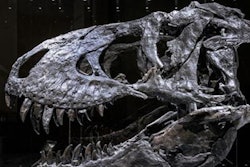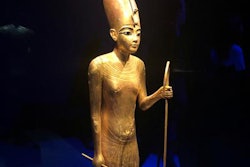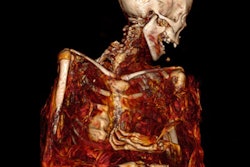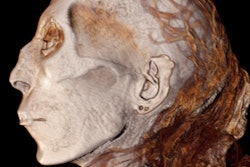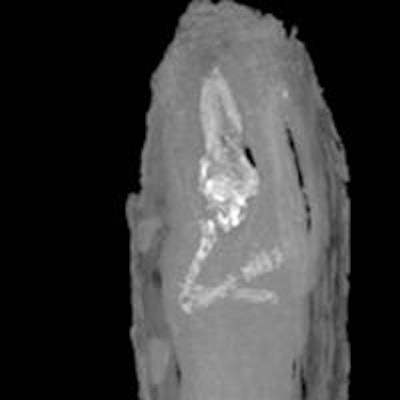
CT scans of a tiny Egyptian coffin long thought to hold internal organs show the remains are actually those of a fetus, researchers from the Fitzwilliam Museum in Cambridge, U.K., reported.
The youngest mummy ever discovered, brought to England more than a century ago from Giza, Egypt, contains a tiny skeleton, according to the museum.
The British School of Archaeology uncovered the coffin in Giza in 1907, adding the 44-cm-long antiquity to the Fitzwilliam Museum that same year. Typical of Egypt's Late Period, the coffin likely dates to between 644 B.C. and 525 B.C., the museum said.
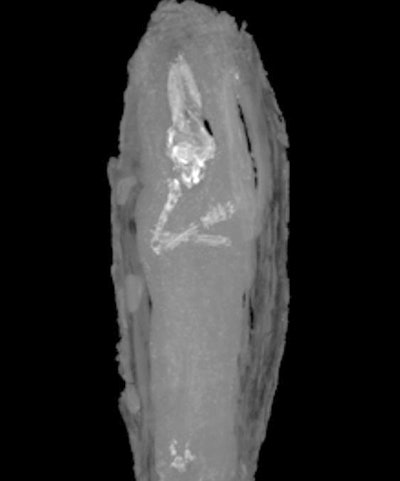 Micro CT of the upper limbs and skull of the fetus. Image copyright Fitzwilliam Museum, Cambridge.
Micro CT of the upper limbs and skull of the fetus. Image copyright Fitzwilliam Museum, Cambridge.The wood casket was covered with tiny carvings, and held a small package wrapped in bandages and covered with black resin. After an x-ray of the coffin gave inconclusive results suggesting a skeleton, the results of cross-sectional CT clearly showed the remains of a fetus.
The fetus had 10 fingers and 10 toes, and long leg and arm bones; however its gender cannot be determined. The skull and pelvis were found to be collapsed. The value of CT is it can show the inner workings of such artifacts without causing any structural damage, enabling the research team to check for abnormalities and estimate the age as accurately as possible, said Dr. Tom Turmezei, an honorary consultant radiologist at Addenbrooke's Hospital in Cambridge. He said the tiny fetus, estimated to be aged at 16 to 18 weeks' gestation, was CT's most valuable find yet at the hospital.
The finding that the fetus' arms were crossed, along with the tiny carvings on the coffin, reveal the great importance Egyptians accorded to burial rituals and for life even in the first weeks of inception, said Julie Dawson, the museum's head of conservation.
The Fitzsimmons find isn't the only mummified fetus to be found, but history reveals few examples. Tutankhamun's tomb contained two small fetuses that were more developed, at about 25 weeks and 37 weeks into gestation, the researchers said.
The mummy can be viewed until 22 May at Fitzwilliam Museum in Cambridge.




